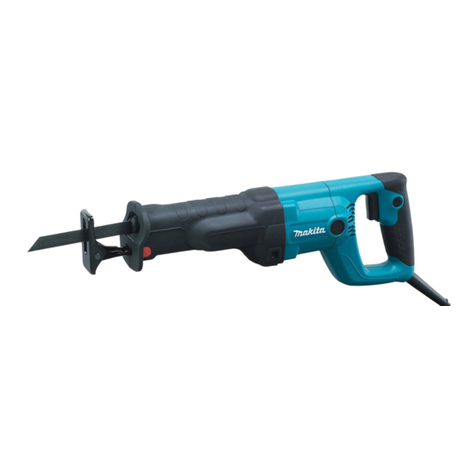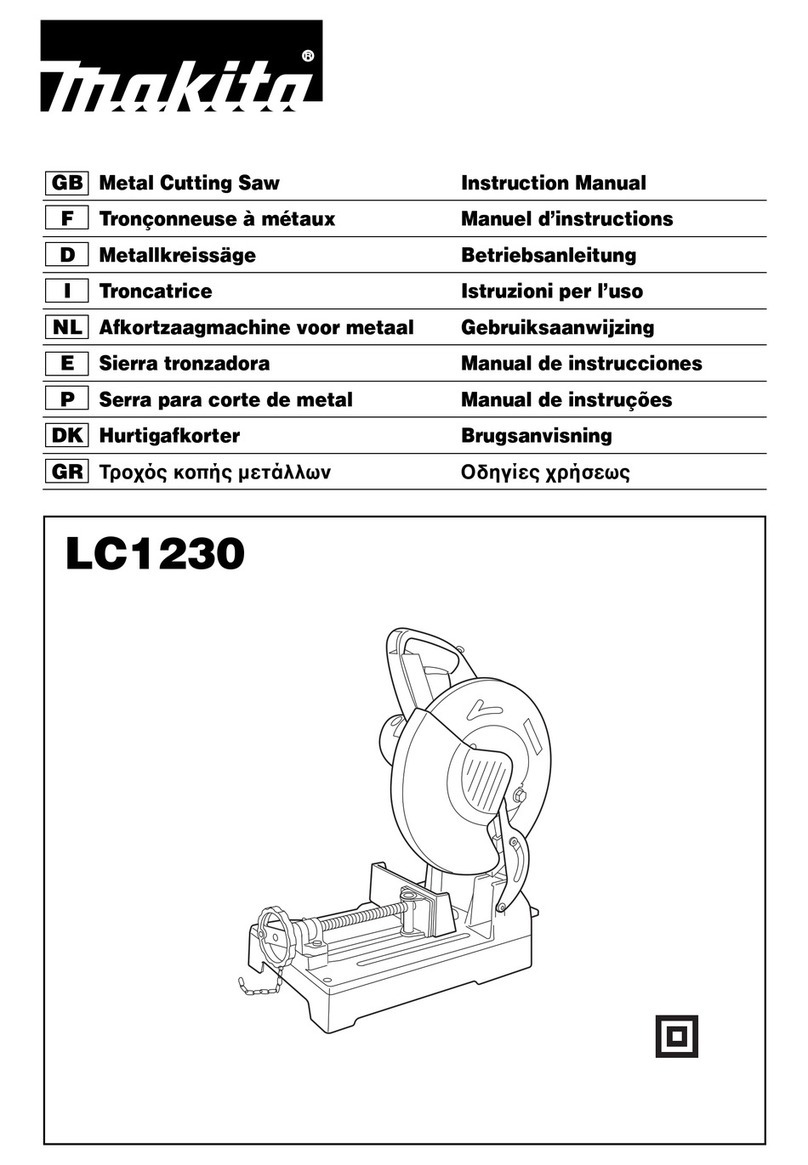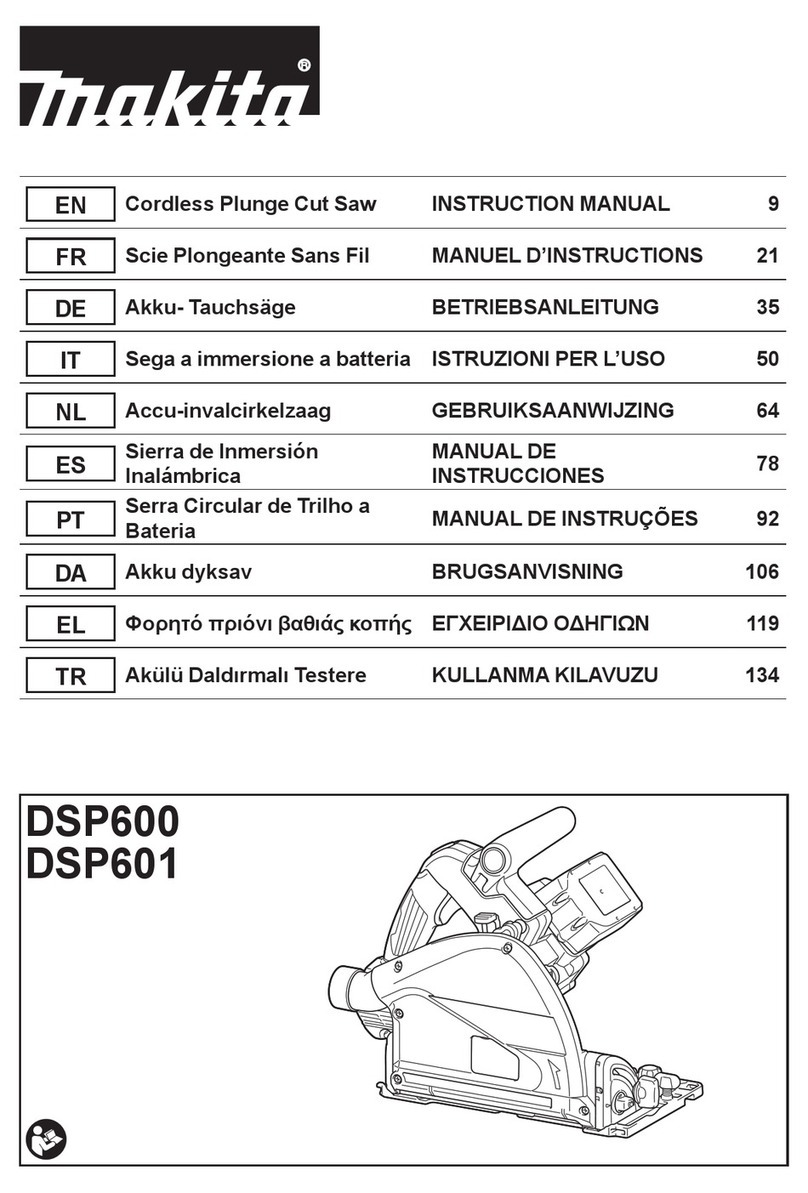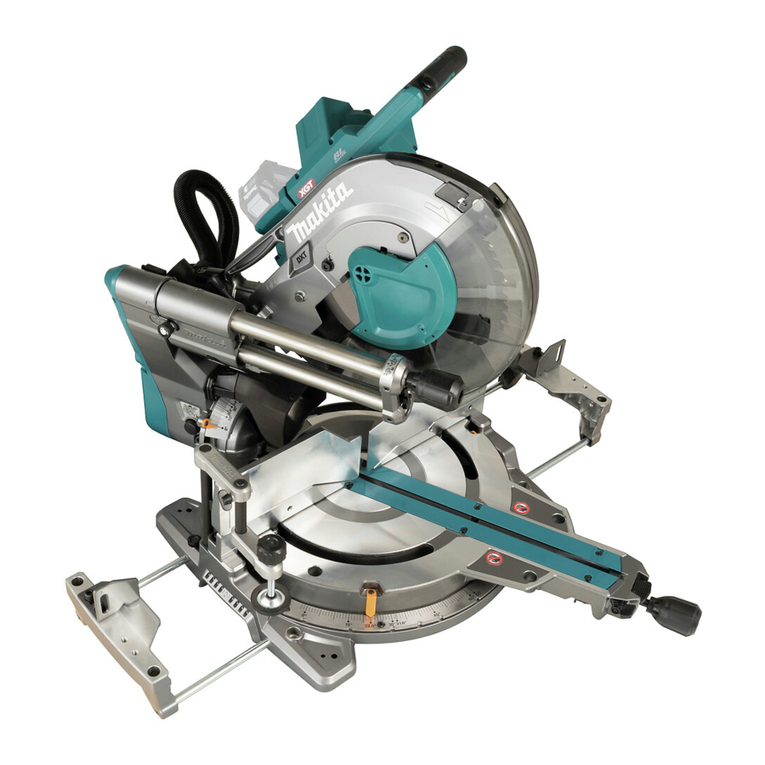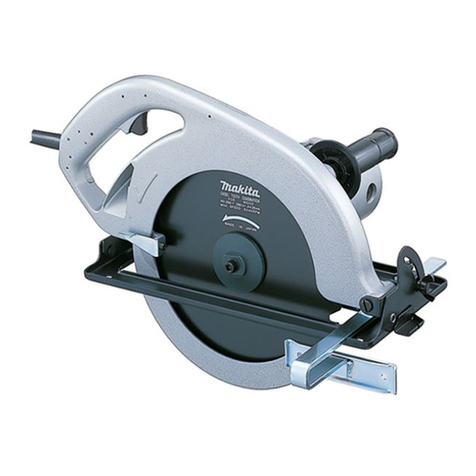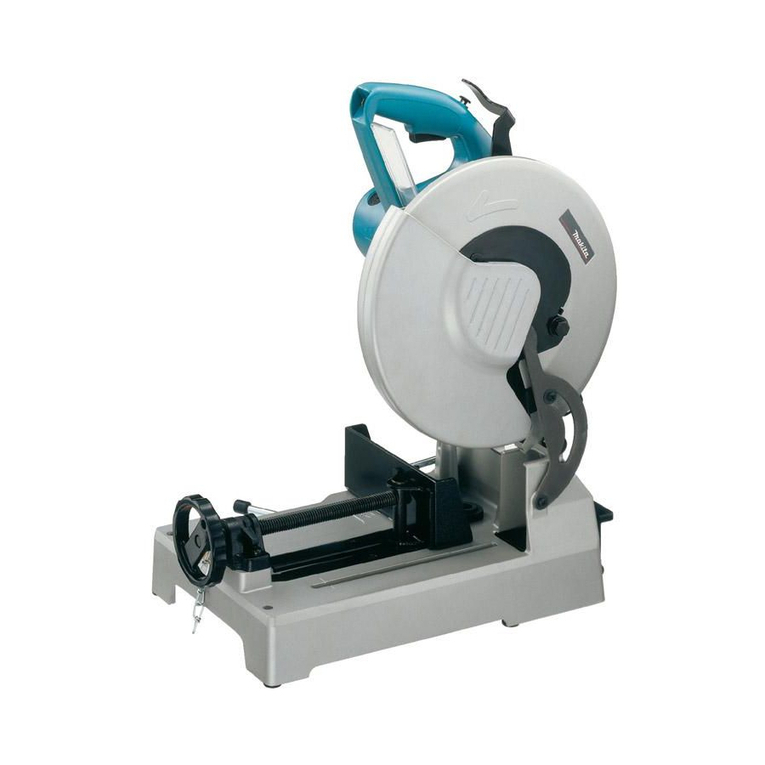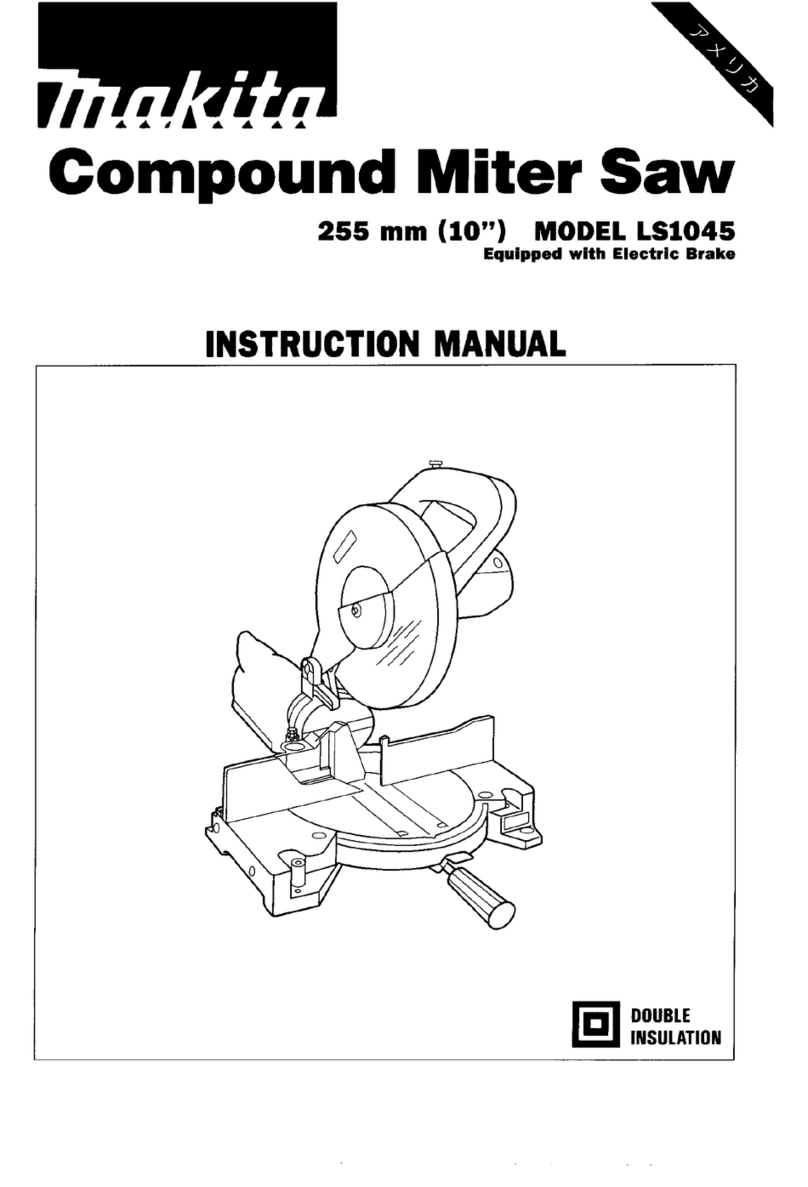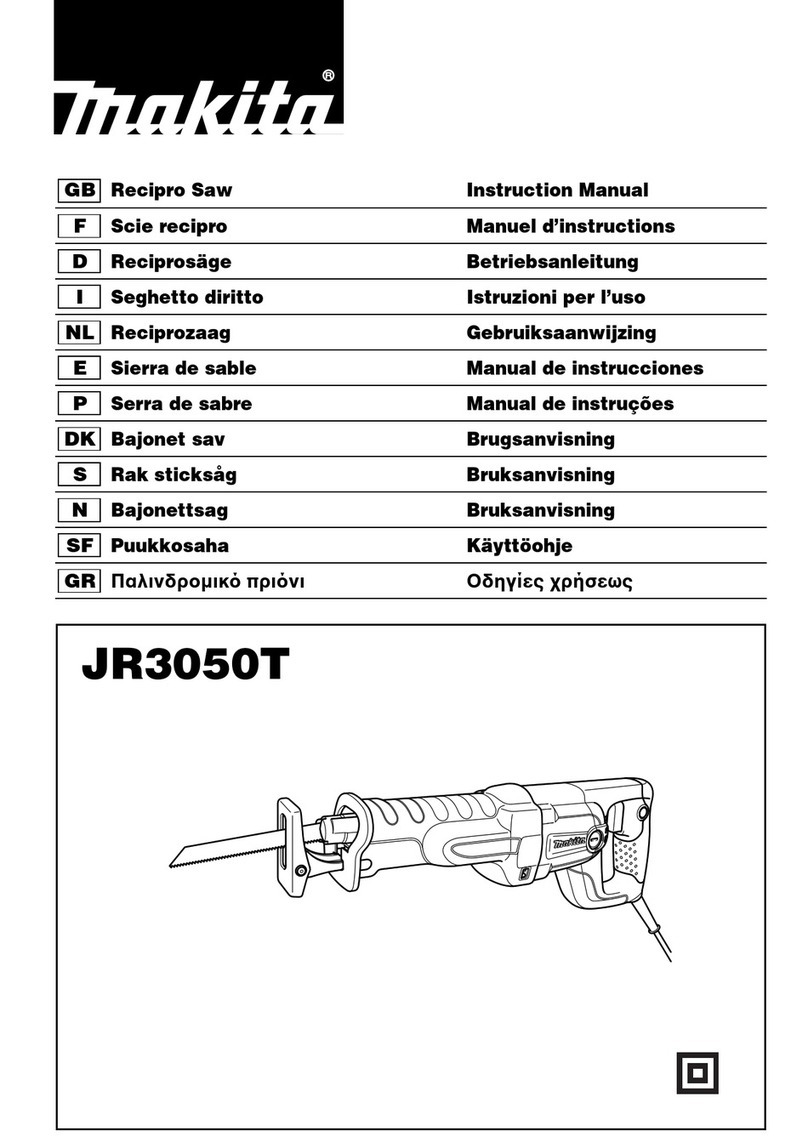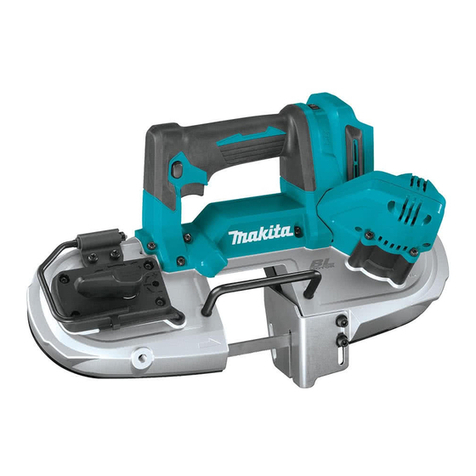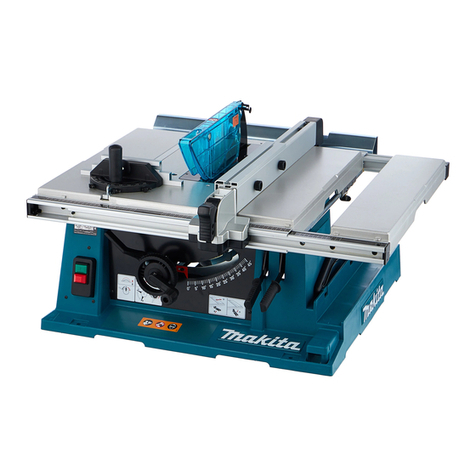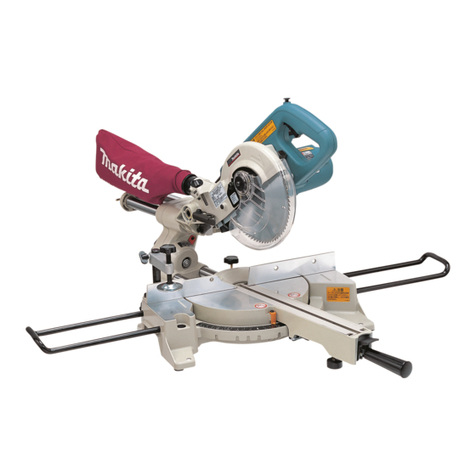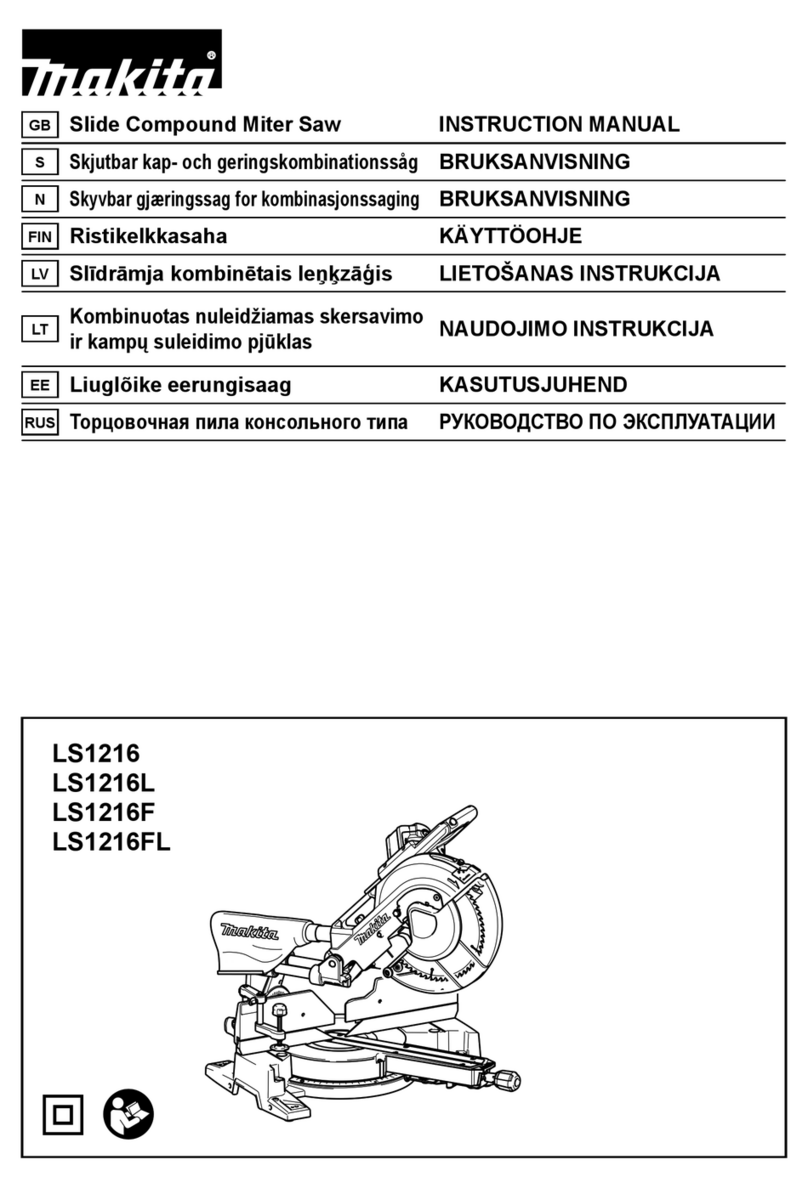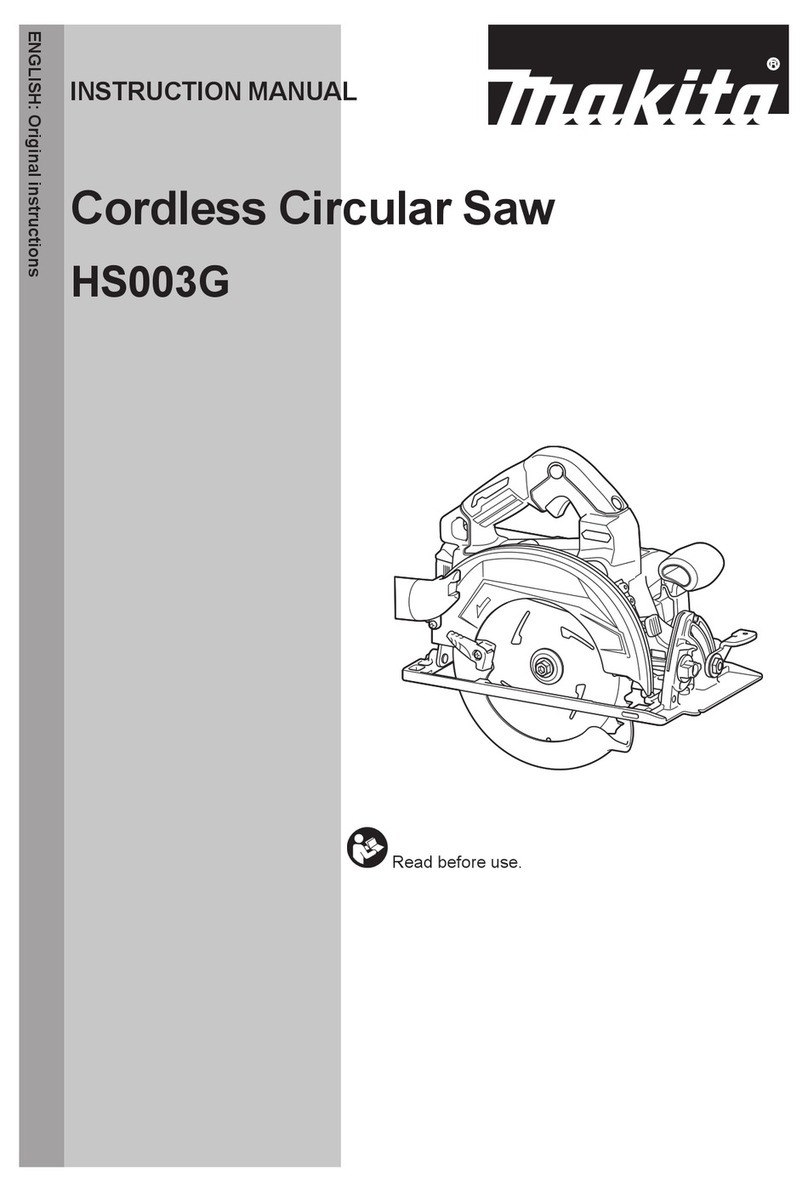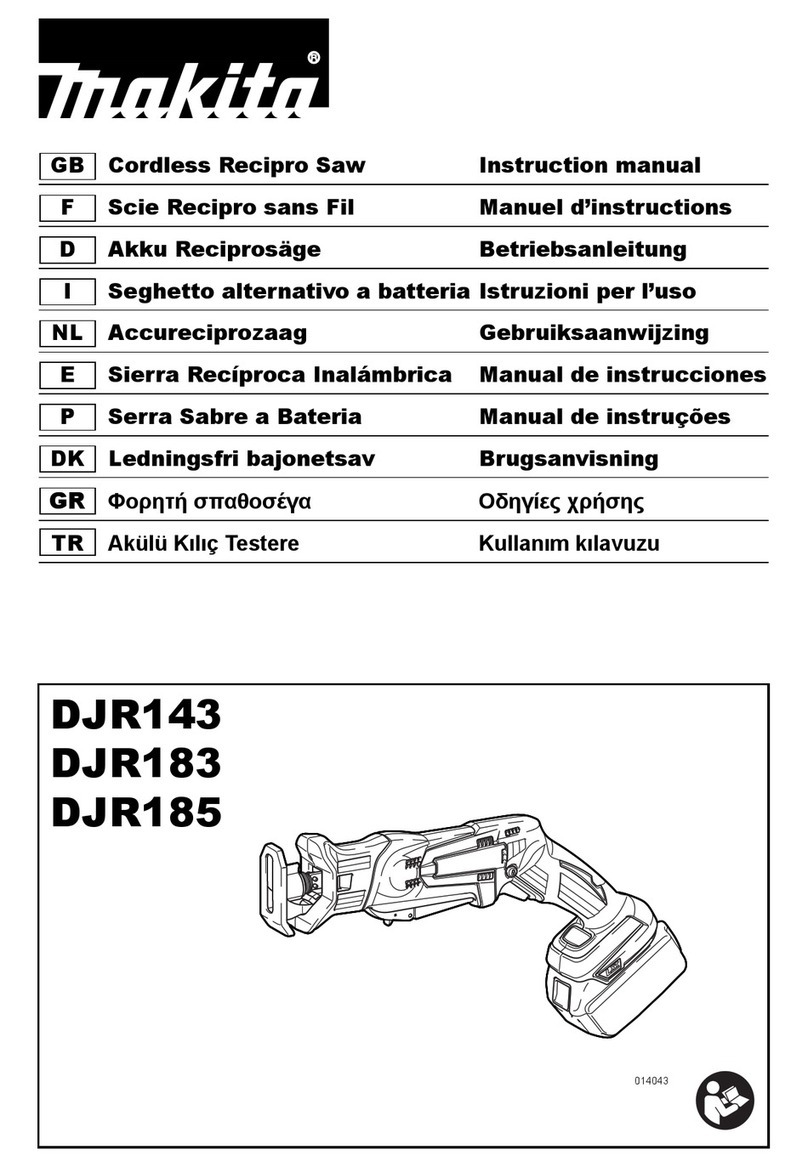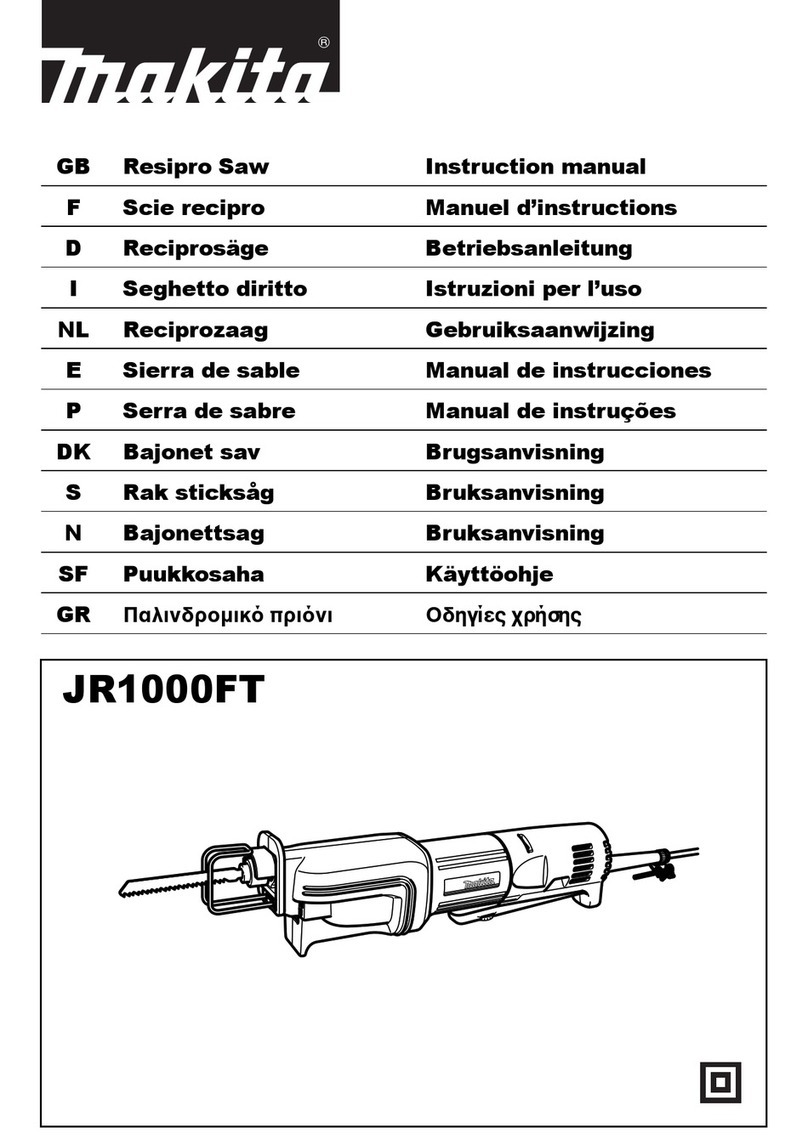SpecificSafetyRules
1.
DANGER! Keep hands away from cuttingarea and blade. Keep your second
handon auxiliary handle,
or
motor housing. If both handsare holdingthe saw,
they cannotbecut bythe blade.
Keep your body positioned to either side of the saw blade,
but
not
in
line
with the saw blade. KICKBACK could cause the
saw
to jump backwards. (See
"Causes and Operator Prevention of Kickback")
Do notreach underneath thework while blade is rotating. The guard can not
protectyou from the blade below the work. Don't attempt to removecut material
when blade
is
moving
CAUTION: Blades coast after turn off.
2.
Check lower guardfor proper closing before each use. Donot operate saw if
lower guard does notmovefreely and closeinstantly. Never clamp
or
tiethe
lower guard intothe open position. If saw
is
accidentally dropped, lower guard
may be bent. Raise the lower guard with the RetractingHandle and make sure it
movesfreelyanddoesnottouchthe blade
or
any otherpart, in
all
anglesanddepths
of cut.
3.
Checktheoperationandconditionof thelowerguardspring.
If
theguard and
thespringarenotoperatingproperly,theymustbeservicedbeforeuse. Lower
guardmayoperatesluggishlydueto damagedpartsgummydeposits,or
a
buildupof
debris.
4.
Lower guard should be retracted manually only for special cuts such as
"Pocket Cuts." and "Compound Cuts." Raise lower guard by Retracting
Handle.As soon as bladeentersthe material, lower guard must bereleased.
For
all
other sawing, the lower guardshould operateautomatically.
5.
Alwaysobservethatthelowerguardiscoveringthebladebeforeplacingsaw
downonbench
or
floor. An unprotected,coastingbladewill causethe sawto
walk
backwards,cuttingwhatever
is
initspath.Beawareof thetimeittakesfor theblade
to stopafterswitchis released.
6.
NEVER
holdpiecebeingcut
in
your hands
or
acrossyour leg. Itis importantto
supportthe work properly to minimizebodyexposure, bladebinding,or
loss
of con-
trol.
7.
Holdtoolbyinsulatedgripping surfaceswhenperforminganoperation where
the cutting tool may contact hidden
wiring
or
its own cord. Contact with
a
"live" wirewillalsomakeexposedmetalpartsof thetool "live" andshockthe oper-
ator.
8.
When rippingalwaysusea
rip
fence
or
straight edgeguide. This improvesthe
accuracyof cutandreducesthe chancefor blade binding.
9.
Always use blades
with
correct size and shape (diamond vs. round) arbor
holes. Bladesthat do not matchthe mountinghardware of the saw will runeccen-
trically, causing
loss
of control.
10.
Neverusedamaged
or
incorrectbladewashers
or
bolts.The bladewashers and
boltwere specially designed for your saw, for optimum performanceand safety
or
operation.
4
